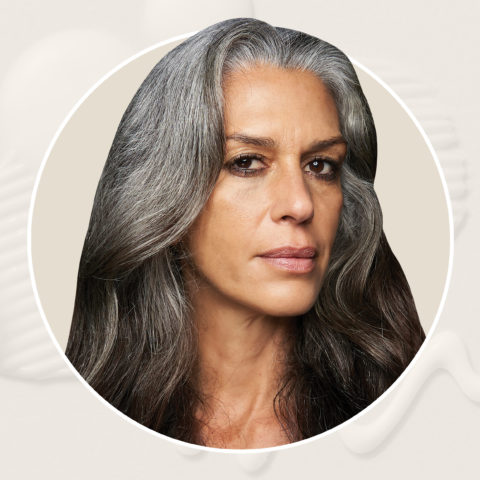Netflix’s New Miniseries Self Made is a Lesson in Hair and History Everyone Needs to See
We spoke with Elle Johnson, the co-showrunner on the series, to find out more.
I first learned about Madam C.J. Walker over five years ago when I finally decided to relinquish my years-long loyalty to chemical relaxers and, instead, embrace my natural coils. My obsession with all things textured hair (the unique hairstyles, the proper care products) was immediate and deep research into this totally new category for me followed.
Madam C.J. Walker (née Sarah Breedlove) was an African American entrepreneur from the early 1900s who became the first female self-made millionaire in the U.S. by developing a range of haircare products for Black hair despite all the racism, misogyny and business rivalries of her time. And ever since I became aware of Walker, I’ve thought to myself that this leading beauty mogul and hair culturalist deserved to be better heralded. “Why hadn’t I ever read about Walker in one of my favourite magazines?” I immediately posed in my head.
So you can only image my excitement when I heard that streaming giant Netflix was releasing a biographical, rags-to-riches miniseries on the trailblazer called Self Made: Inspired by the Life of Madam C.J. Walker with Academy Award winner Octavia Spencer as Walker’s Hollywood stand-in. What’s more, the show, which is based on a book by Walker’s great-great-granddaughter A’Lelia Bundles, was brought to life by an all-Black and all women-led team. It’s also worth mentioning that Self Made was filmed in and around Toronto and that the outstanding hairstyles shown throughout were led by a Toronto-based film and television hairstylist.
I caught up with Self Made’s co-showrunner Elle Johnson to talk Walker, plot, beauty standards and more. Read our interview below.
What was it like working with an all-Black and all women-led team?
“It was incredible! I think one of the things we really wanted to do was empower other Black women to tell our stories. We’re in such a moment now where it feels like stories of people of colour, and women of colour, are finally being valued and sought after. We felt like this was a moment where we’d be able to hire other Black women who would be enthusiastic about this project. And I’ve got to say, that’s one of the things that really helped us through: everyone being so passionate about telling Madam C. J. Walker’s story. She’s such a legend and an iconic figure.”
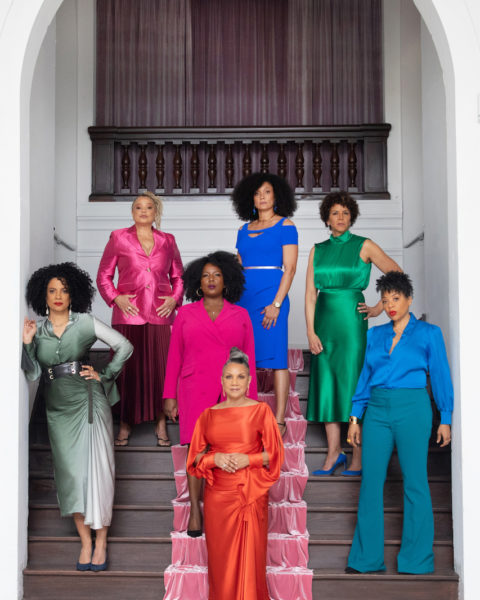
What surprised you the most about Madam C. J. Walker and her life?
“Oh my God! Everything about her surprised me. I knew who she was: She’s just one of those names I feel like, as a Black woman, you just always hear about and you know that she made haircare products. But the range of her life, and how epic and complicated it was, is fascinating.
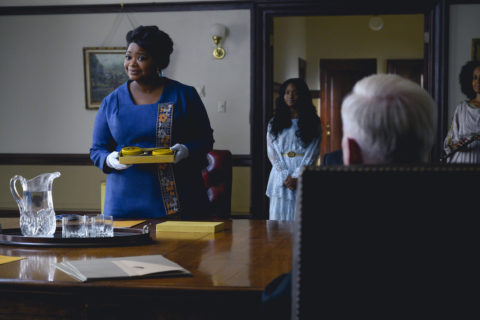
One of the things that really struck me about Madam C. J. Walker was how she was such a force within business. I knew that she had created these products and had run a business, but I actually didn’t realize that she was actually the first female millionaire in America — not just Black, or white, or any other type of women. She was the first female. And she was really on par with some of the titans of industry at the time. She at one point had 10,000 people working for her across the country, which is amazing to me. I was also floored by the fact that the way she ran her company was quite unusual. Her mission was to not only sell her products but to uplift Black women. So in hiring sales agents, and in hiring people to work in her factories and company, one of the things that she tried to stress was not only rewarding people for selling a lot, but rewarding people for giving back. She had built into her philosophy the idea that her sales agents and other people should give to charity. She would reward people who also gave back and she was an incredible philanthropist herself. She gave staggering amounts of money at the time to the YMCA in Indianapolis. I think she made a $5,000 donation, which is mind-blowing money for that period of time.

I was also stunned to learn that part of the reason she went on this journey with her hair and discovered this hair growth product was because she herself was going bald. It was interesting to read about the fact that she lived in a time period where, not just for poor people but also for everyone, indoor plumbing was not that widespread. It was kind of hard to stay clean and healthy, especially for people within the lower rungs of society like Madam C. J. Walker was when she started out. She was not able to properly clean her hair and so she had a scalp disease that had her losing her hair, and that was the process through which she figured out this formula and came to create her product line because she was going bald herself as a result of the bad hygiene at the time.”
Colourism is still a very real problem today — both within and outside of the Black community — and you introduced and tackled that discrimination practice in the miniseries. Can you speak to that?
“In the writers room, we really felt that we couldn’t do a show about Black hair and Black beauty without addressing the issue, so we wanted to explore the origins of that and understanding where Madam C. J. Walker came from helps put it into context.

She was a woman who was born two years after slavery, so she was born free, but the issues around slavery and the racism that resulted from slavery permeated her life — and Black peoples lives. Colourism is still a thing that we deal with today and it exists in any community: You see it in the Latino community, the Indian community. So we felt it was an issue that, yes specific to Blacks in the show, but also universal.
We felt it was important to explore how that effected Madam C. J. Walker and her sense of self: her sense of her own beauty and how that kind of fuelled her within her business to want to make products that would help make all Black women — regardless of their hair texture and skin colour — feel beautiful and feel their best.”

There’s another leading beauty culturalist in Self Made, Addie Monroe, played by Carmen Ejogo. How would describe Monroe and Walker’s relationship?
“Addie Monroe was a composite character. Madam C. J. Walker was one of the better-known hair culturalists at the time, but she certainly wasn’t the only one. There were many people, especially after her. So Addie Monroe was a composite of many different women of that day who were also making haircare products.
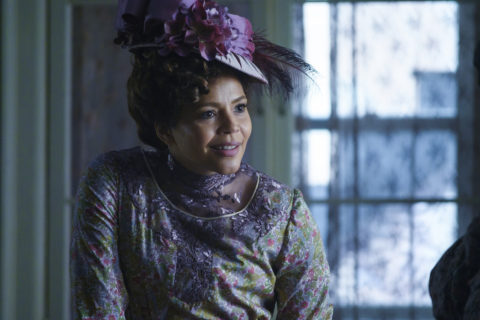
We felt like that would be a great character to kind of help us explore the issue of colourism and really put it on its feet so that audiences could appreciate what Black women go through in terms of feeling like you are less than attractive if you are not a certain skin colour or if your hair doesn’t look a certain way. We felt like that was really part of Walker’s journey (and part of all Black women’s stories) to understand that we’re all beautiful, and that you don’t have to have a certain skin tone in order to be considered so.
In the show, Addie Monroe and Madam C. J. Walker definitely were two women who started off wanting to help each other and be there for each other, but then the issue of colourism rears its ugly head and becomes a divisive factor. It also spurs Madam C. J. Walker on to do her own thing. I would definitely describe the Monroe-Walker relationship as frenemies, because I feel like part of the arc of that relationship is also to show that no matter our differences, no matter our disagreements and petty arguments, as Black women, we’re always stronger if we come together in the end.”
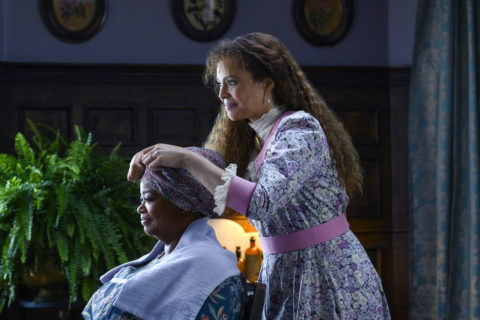
Let’s talk hair! What research went into all the various hairstyles the actresses and actors wore?
“We felt it was really important to get that right. A’Lelia Bundles’ book was a tremendous resource, and we also had access to A’Lelia herself who knew what the hair formula was and could tell us details about the products that Madam C. J. Walker made. But one of the things we knew we had to do in terms of making the hair look right for the show was to have incredible wigs made. We hired Etheline Joseph, an incredible Toronto-based hairstylist and hair designer who designed the wigs for the show. The research that she did just took the hair to another level.
One of the things that we had discussed with Etheline was making sure that the hair was specific to the period, not only in terms of the hairstyle but also in terms of the quality and texture of the hair. We wanted to do a period piece where the hair didn’t look too smooth and polished because at that time it wouldn’t have been. They didn’t have the same tools, like a blow-dryer or the same types of hair straighteners, that we have now. Even the hot combs where different back then.
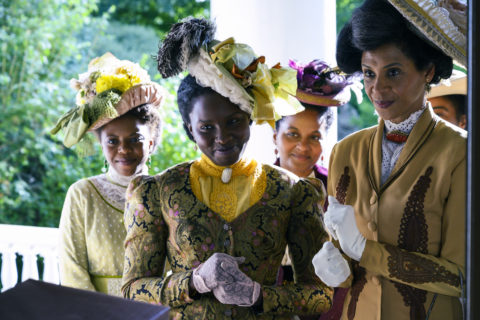
Etheline researched how to style the hair the right way. Like she would only use hot combs that had the exact specific distance between the teeth and not something that wasn’t available at the time. That’s something we’re most proud of: the hair actually looks like what it would have back then.
We were also quite stunned when we found period photographs of hairstyles from that day, and just seeing the scope and breath of natural hairstyles people were wearing. We look at the current natural hair movement revolution that’s happening, and we think that we kind of started this look; what we consider forward-thinking hairstyles today. But then you look back to photographs from the early 1900s and you realize, no! People of course were wearing their hair that way for a long time. The hairstyles that we’re seeing today are harkening back to the way people were wearing them naturally back in the 1900s. It was really eye opening.”

How big was Etheline’s hair team on set?
“The team varied depending on the size of the shoot that day. At one point, Etheline had mentioned she had as many as twenty hairstylists working. When we filmed party scenes or large scenes, there was one point where we had 250 wigs in our wig room!
Even before we got into our official prep for the show, we didn’t start shooting until July 2018, but the month before that, we contacted Etheline and got her on board and she started doing research and started collecting wigs because we didn’t know who we would have in terms of cast and extras, but we knew we were going to need them, so she was getting ready and styling wigs way before we were even in prep so that we would be ready.
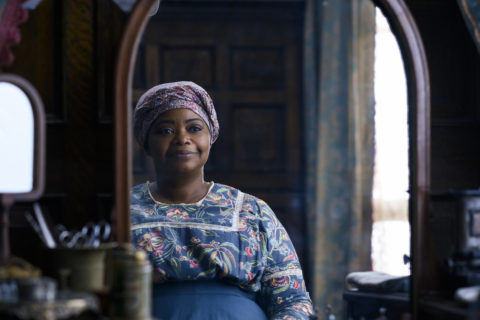
For Octavia Spencer, we had fourteen wigs for her in the first episode in order to show Madam C. J. Walker’s hair journey. Because along with Madam C. J. Walker’s life journey, her hair had its own character arc: going from a woman who wore her hair completely covered to a woman who was balding to a woman whose hair was growing in to a woman whose hair was more styled. Telling that journey required fourteen specific handmade wigs.
Similarly, Walker’s daughter Leila Walker, who was played by Tiffany Haddish, she also goes on a hair journey, which is exemplified by Leila coming into her own as a person and becoming this sort of avant-garde leader of the Harlem Renaissance. So her hair goes through a journey of being more natural to more on the cutting edge [side] for that time. Again, it was about creating wigs that were going to exemplify that throughout the course of the series.”
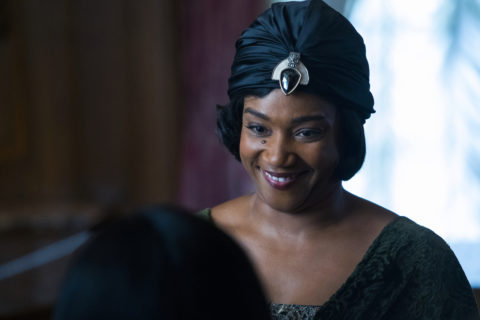
What do you hope audiences take away from watching the miniseries?
“I’m so excited for people to see this because I think people need to know who Madam C. J. Walker was. And not just Black women or women in general. Everyone. She was an incredible force — she helped create this billion-dollar haircare industry that exists today — and were it not for the ‘isms’ that she had to deal with, from sexism to racism, her business could have been much bigger and expansive in the world.
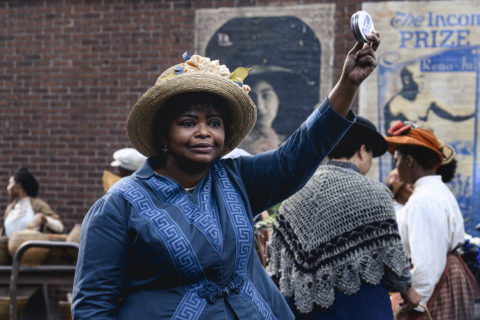
I would love for people to take away that Madam C. J. Walker is a figure in history who is worthy to be looked up as a titan of industry. That she is up there with Rockefeller, Ford and Carnegie. She was a businessperson who ultimately was concerned with her community and uplifting the women in her community. That’s one of the enduring legacies of Madam C. J. Walker. She built this business through persistence, grit and perseverance, but also in a way that other people could follow her example.”




